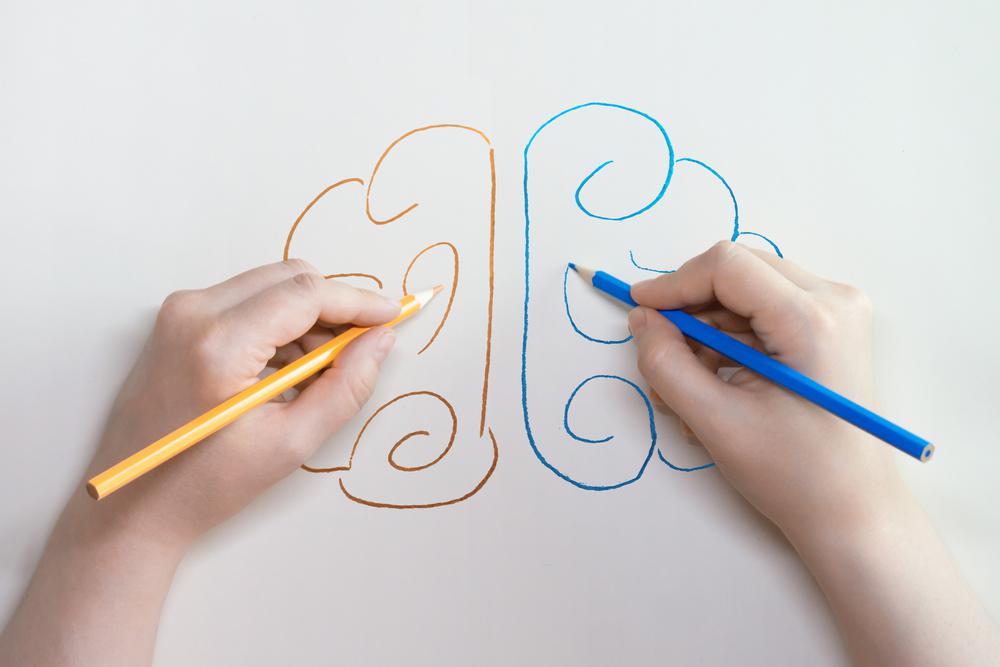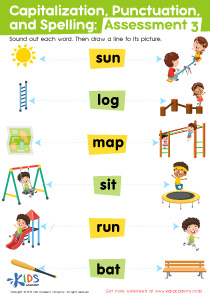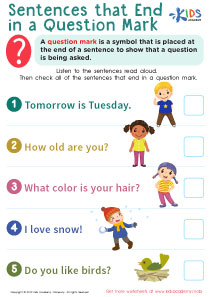Cursive writing practice Cursive Writing Worksheets for Ages 7-8
21 filtered results
-
From - To
Boost your child's cursive writing skills with our expertly designed Cursive Writing Practice Worksheets for Ages 7-8. Perfectly tailored for young learners, these worksheets offer a variety of engaging exercises to help them master the art of cursive writing. From individual letters and connecting strokes to full words and sentences, each activity is designed to enhance fine motor skills and build confidence in writing beautifully. Made to align with educational standards, these worksheets are an excellent resource for both home and classroom settings. Encourage your child to develop a lifelong love for writing with our fun and effective practice sheets.
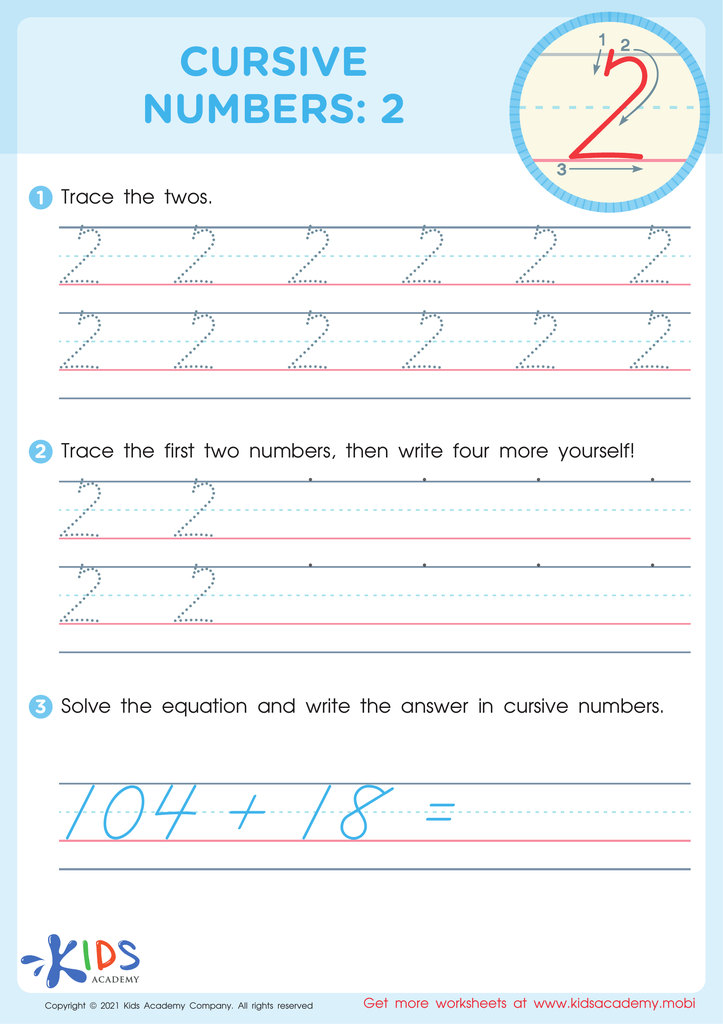

Cursive Numbers: 2 Worksheet


Cursive Numbers: 6 Worksheet
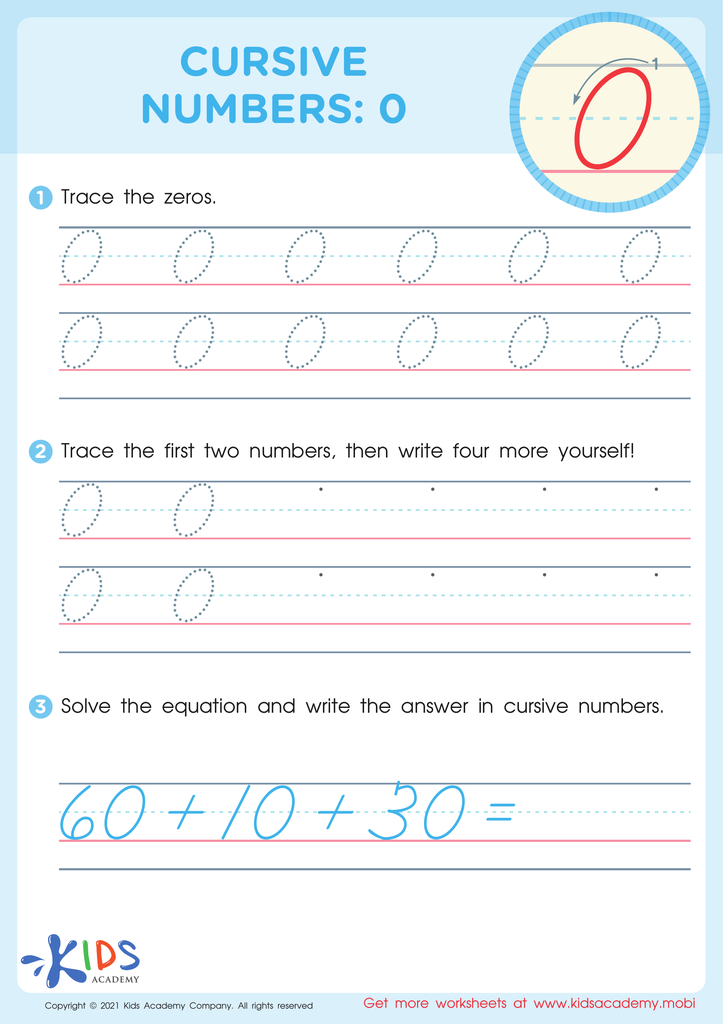

Cursive Numbers: 0 Worksheet
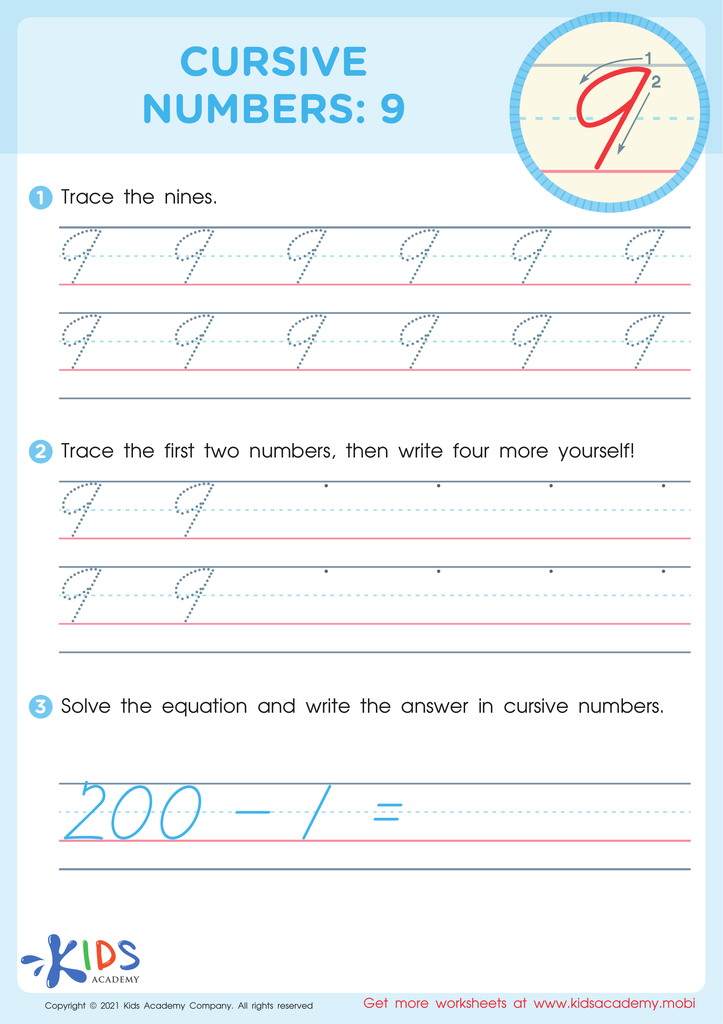

Cursive Numbers: 9 Worksheet
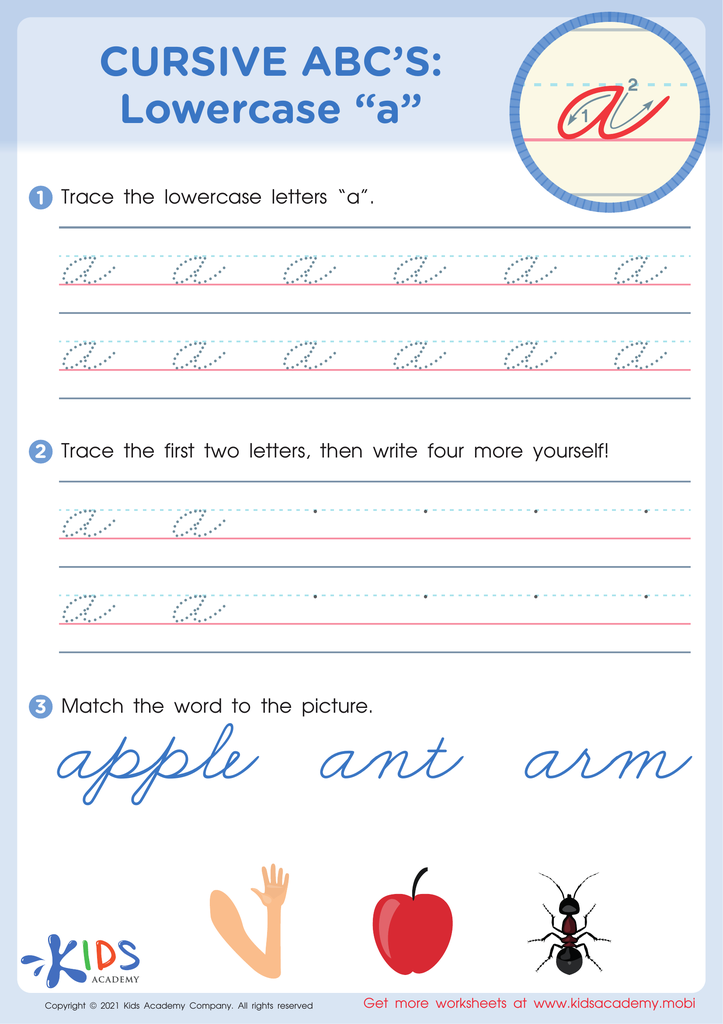

Cursive ABCs: Lowercase a
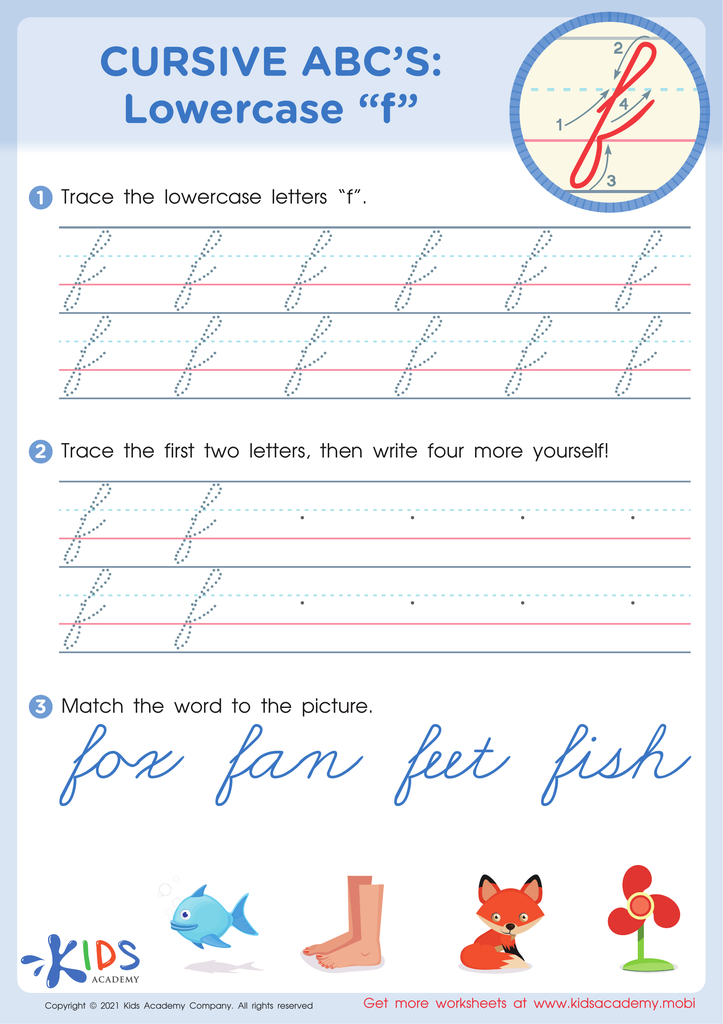

Cursive ABCs: Lowercase f
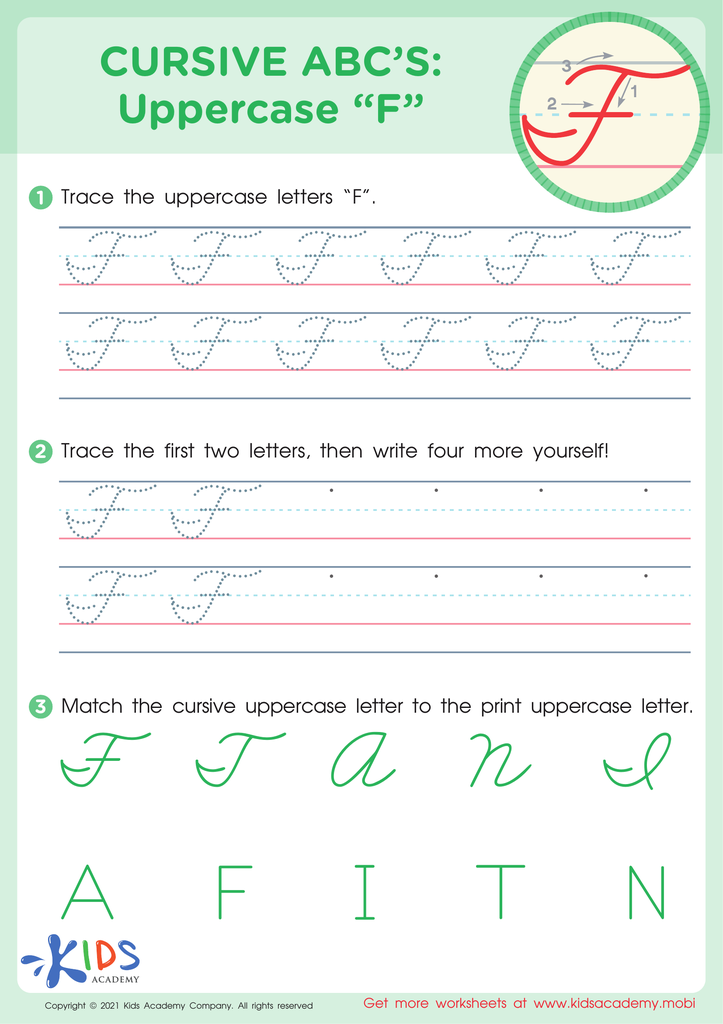

Cursive ABCs: Uppercase F
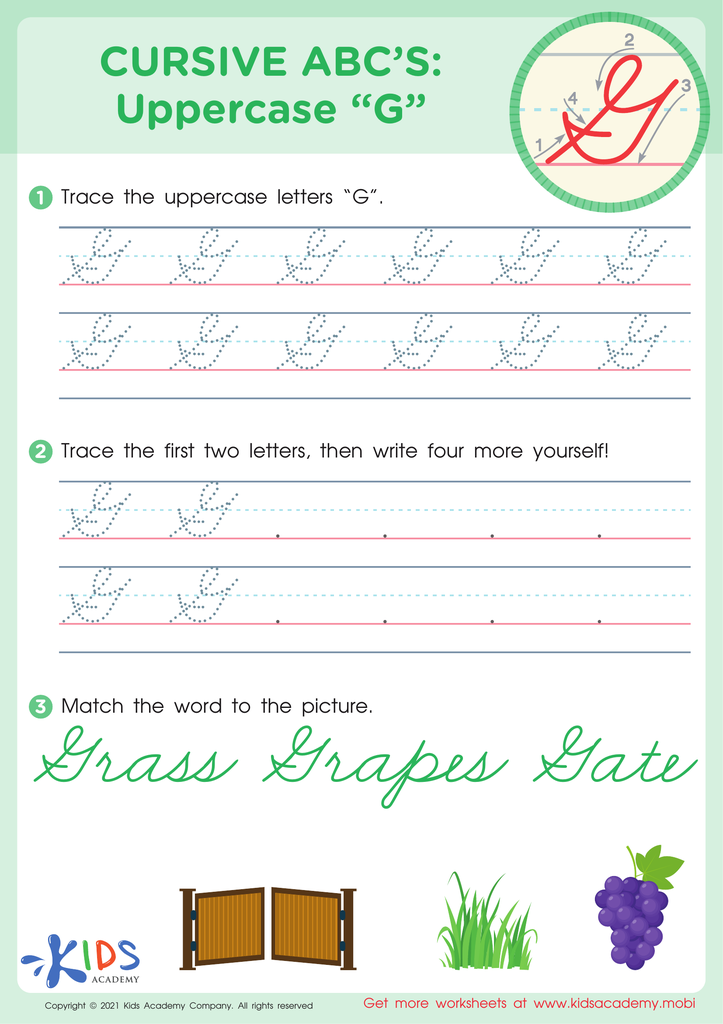

Cursive ABCs: Uppercase G
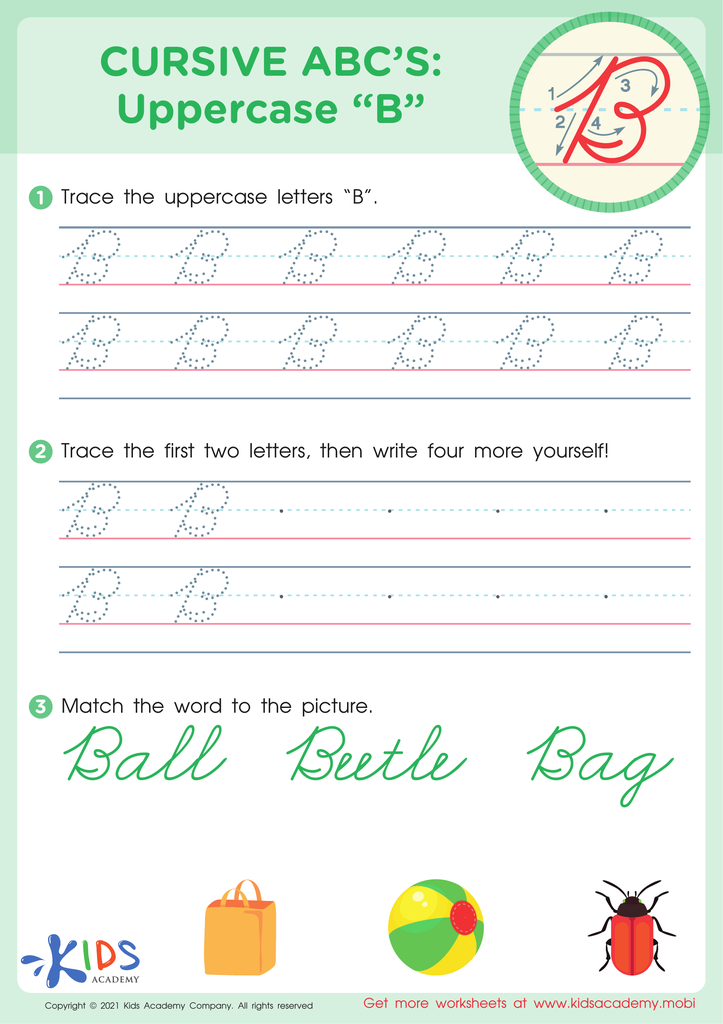

Cursive ABCs: Uppercase B
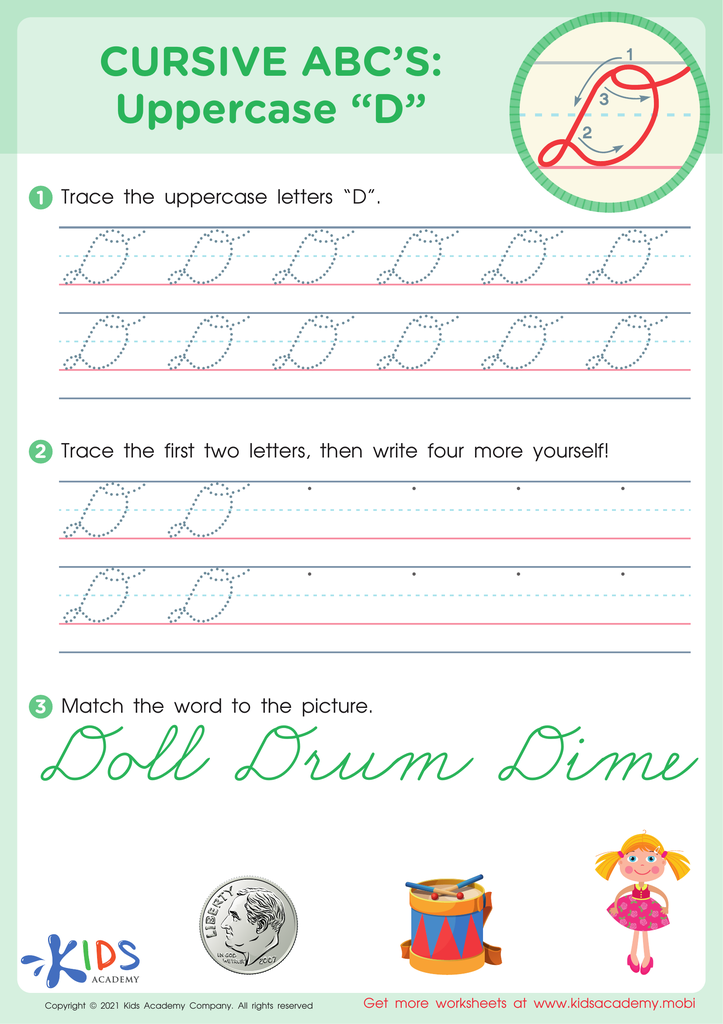

Cursive ABCs: Uppercase D
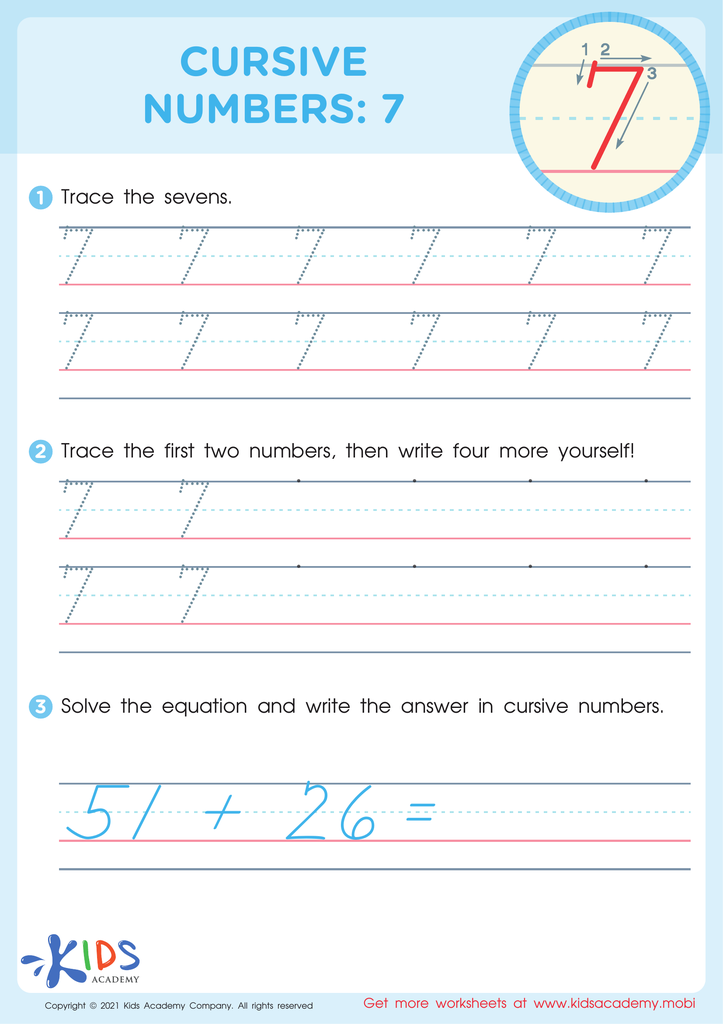

Cursive Numbers: 7 Worksheet
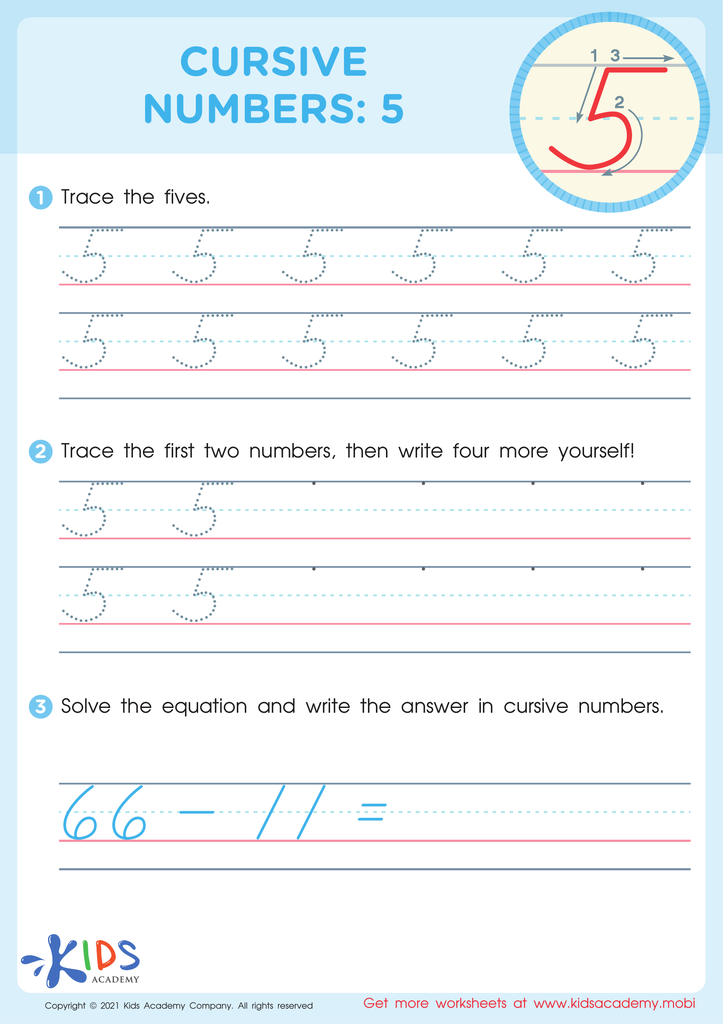

Cursive Numbers: 5 Worksheet
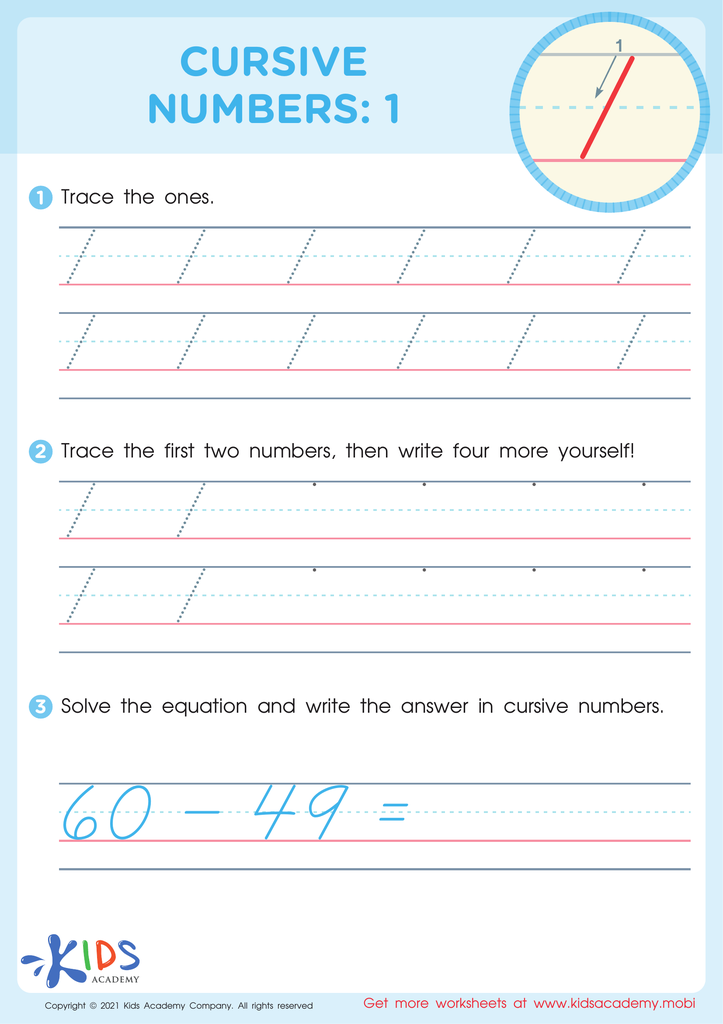

Cursive Numbers: 1 Worksheet
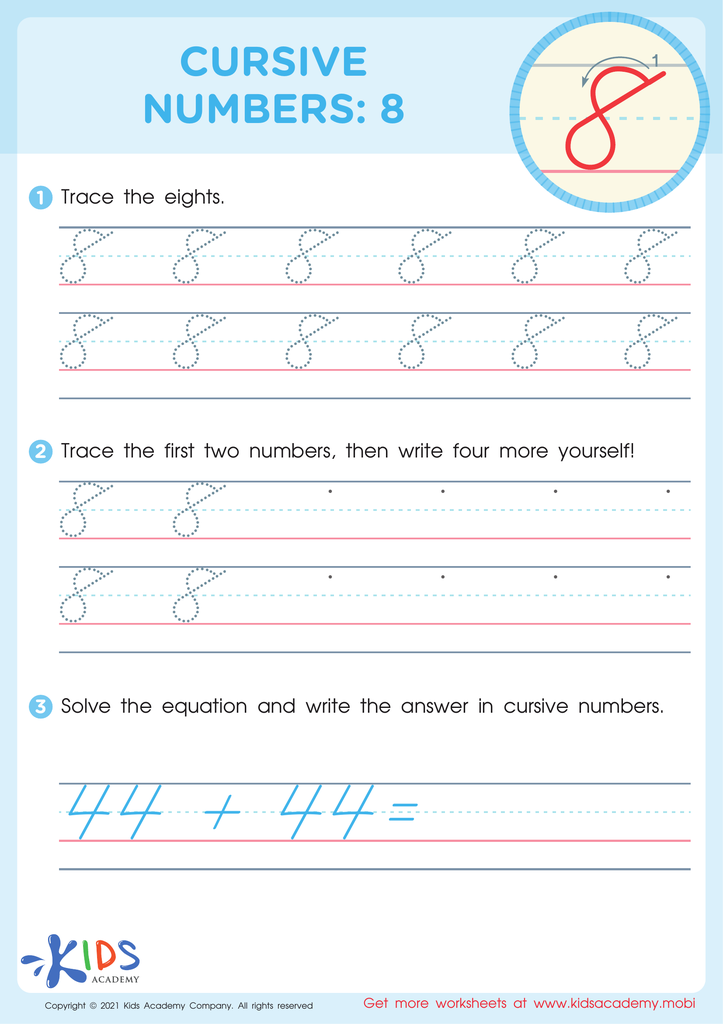

Cursive Numbers: 8 Worksheet
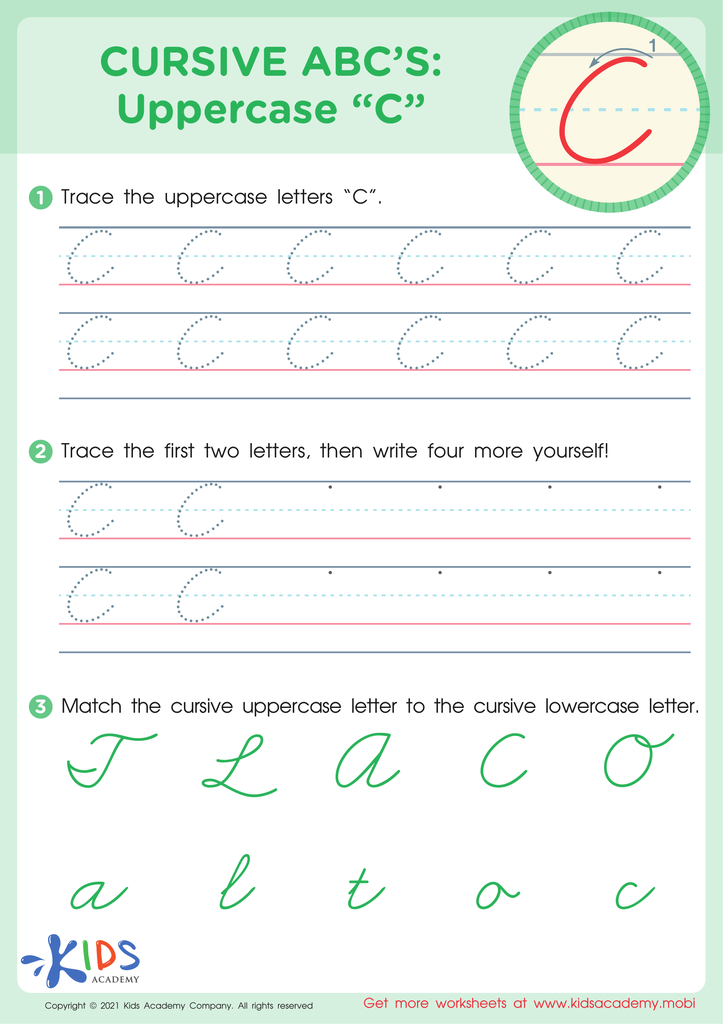

Cursive ABCs: Uppercase C
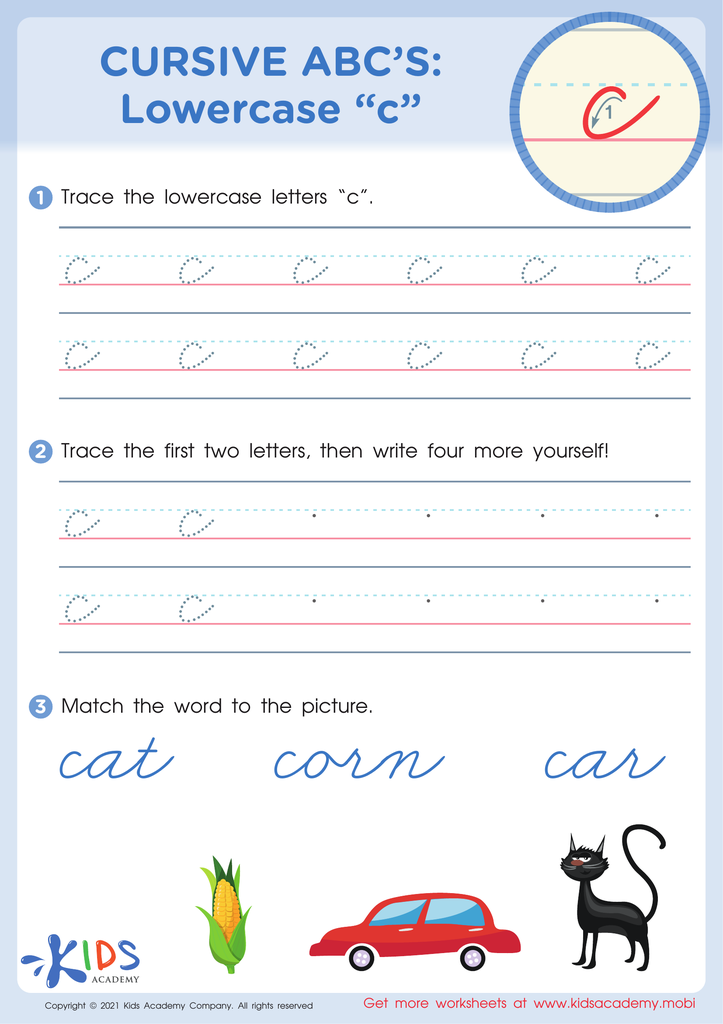

Cursive ABCs: Lowercase c


Cursive ABCs: Lowercase h
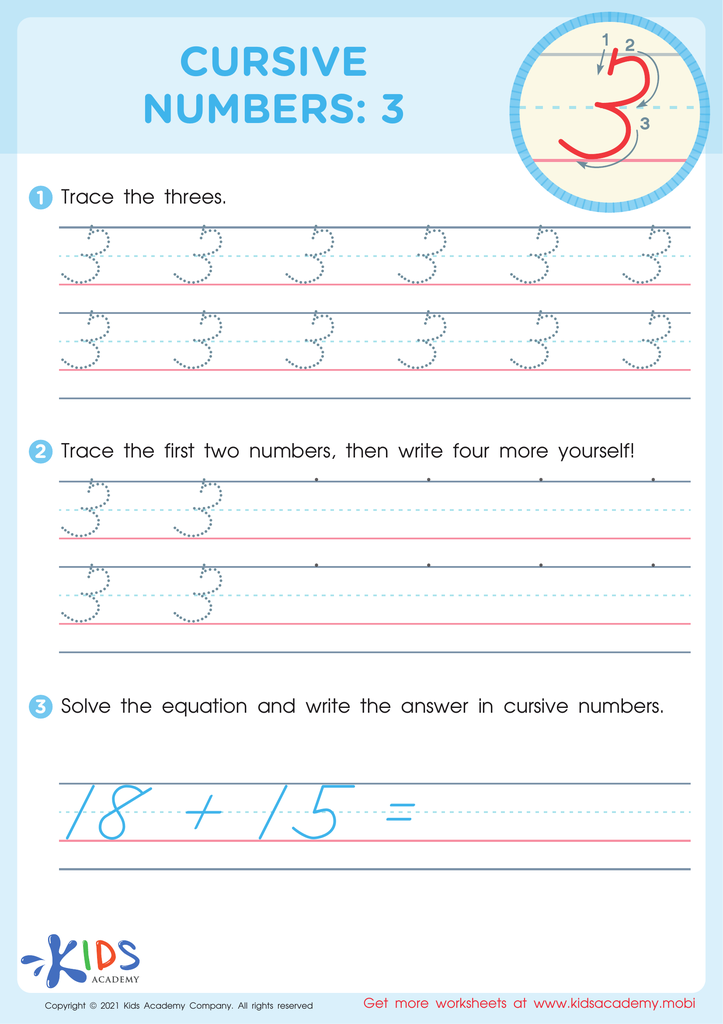

Cursive Numbers: 3 Worksheet


Cursive ABCs: Lowercase e
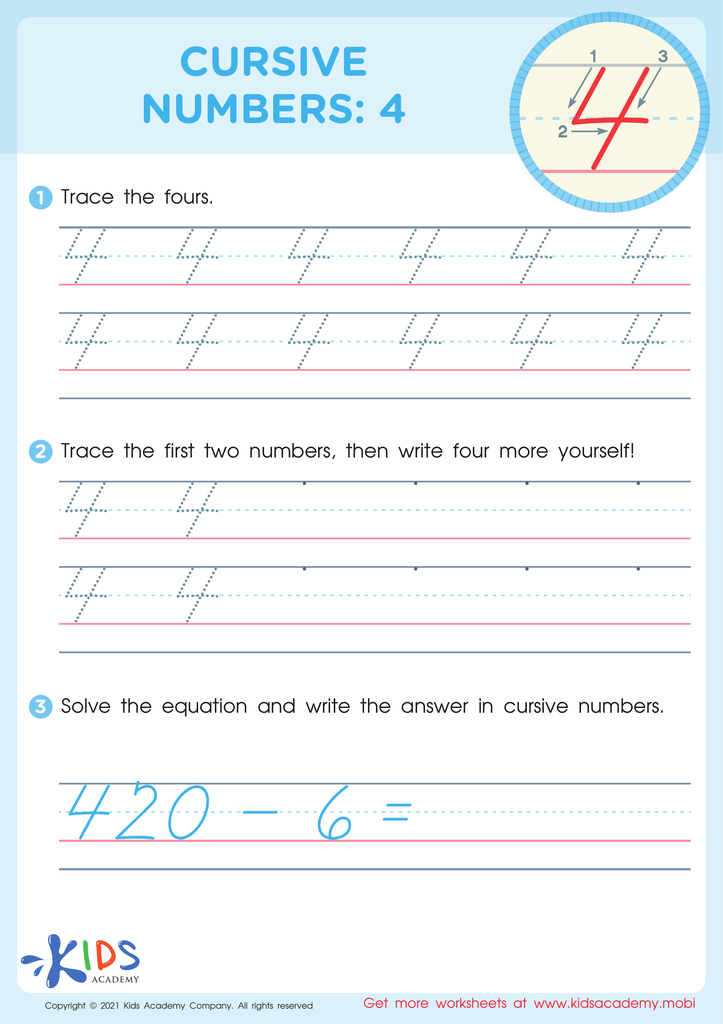

Cursive Numbers: 4 Worksheet
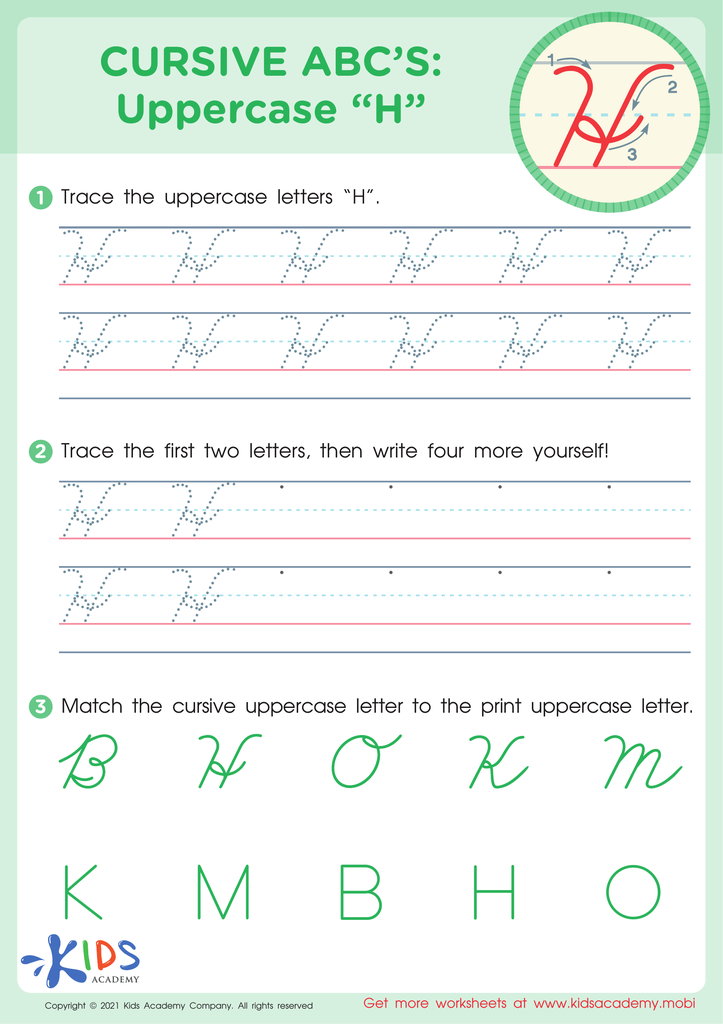

Cursive ABCs: Uppercase H
Cursive writing practice is vital for children aged 7-8 because it serves multiple educational and developmental purposes. Firstly, it enhances fine motor skills through the refined and continuous movements required, which subsequently improve hand-eye coordination and overall dexterity. This development is crucial for other tasks, such as typing and playing musical instruments.
Secondly, learning cursive writing improves cognitive development. It requires thinking, concentration, and a deep understanding of how letters connect, which can lead to better reading skills and comprehension. The flowing style of cursive can help with word recognition and faster note-taking, fostering better academic performance.
Moreover, cursive writing encourages creativity and individual expression. Each child’s handwriting is unique, providing a sense of personal achievement and boosting self-esteem.
From a neurological perspective, cursive writing engages the brain more extensively than typing. Studies have shown that writing by hand activates multiple areas of the brain and aids memory retention.
Additionally, cursive literacy connects children to historical documents and helps them feel a part of cultural heritage. It ensures they can read older texts and signatures—skills that keyboarding alone cannot provide.
In essence, practicing cursive writing develops essential life skills, fosters academic and cognitive growth, and connects children to cultural heritage, making it an invaluable component of early education.









